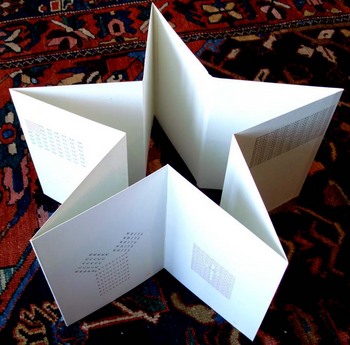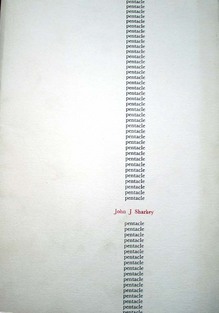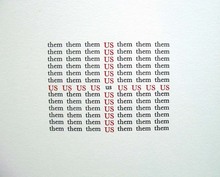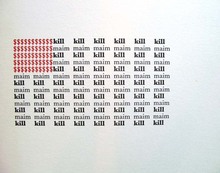John J. Sharkey, Pentacle (Sherborne [Eng.]: South Street Publications, 1969). Graphic Arts GAX 2011- in process
A concrete poem is best seen and not heard. The term originated with Max Bill and Öyving Fahlström in the 1950s and while calligrams, ideograms, and poesia visiva have certainly been around for many years, the concrete movement reached its height in the 1960s in a response (in part) to the Pop Art movement in painting.
The use of the typewriter played a large part in the making of the poetic letter forms. Recently, however, Dr. Roberto Simanowski investigated concrete poetry in digital media, writing, “concrete poetry deals with the relation between the visible form and the intellectual substance of words. It is visual…because it adds the optical gesture of the word to its semantic meaning.”
An Anthology of Concrete Poetry, edited by Emmett Williams (New York: Something Else Press, 1967). Graphic Arts Collection (GA) 2006-1243N
Roberto Simanowski, Digital Art and Meaning: Reading Kinetic Poetry, Text Machines, Mapping Art, and Interactive Installations (Minneapolis: University of Minnesota Press, 2011). Marquand Library (SA) N7433.8 .S56 2011
http://ww2.rediscov.com/sacknerarchives/Welcome.aspx?8152011110211
Sackner Archive of Visual and Concrete Poetry



